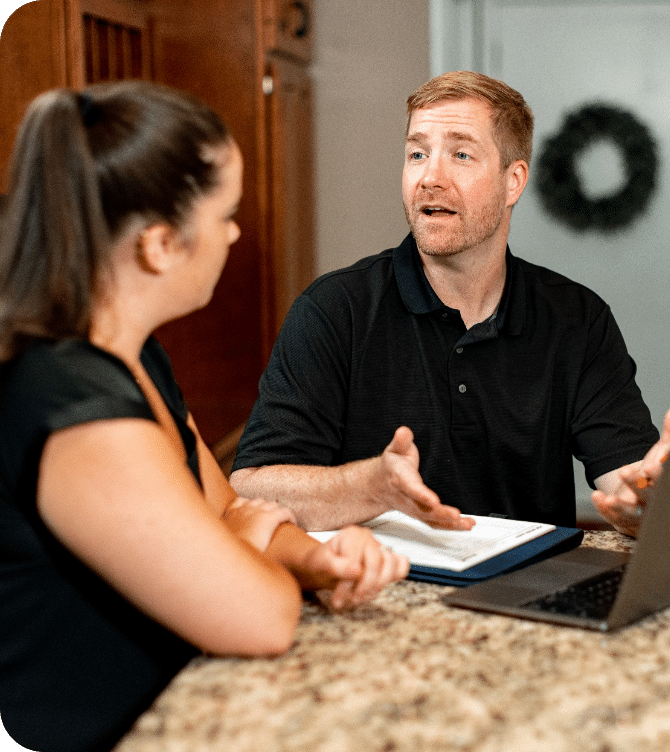
Older homes have different obstacles to work around
You generally won't find wash basins attached to the walls in modern basements. Also, the large cast iron pipes on the floor are a sign of older construction. These things present a slight challenge when designing a waterproofing system. This photo was from the day of the initial inspection. The stains on the concrete blocks let the inspector know that water has been high enough to leave a dirt ring behind. It is clear evidence of a major water problem.

First day on installation, after another major storm
This homeowner made the right choice calling DryZone to fix the flooded basement. In the short time between initial inspection and installation, the basement flooded again. Most of the water was still present when the DryZone crew arrived on site. After a bit of clean up, they set themselves to the task of fixing this problem once and for all.

Inside the sump pump
Most older homes have a sump pump that looks like this. It is basically a terracotta pot that was installed when they first poured the concrete floor. The pit is very small, and doesn't allow for significant drainage. Another problem is that it is open on the top. This makes for a very unsafe environment. Someone could trip in the hole, or a small child or pet might get stuck in there. It also lets a lot of water vapor back into the air, and that leads to nasty smells in the basement.

Wet concrete floor in the basement
When the water gets on top of the concrete floor it is usually because of the immense pressure under the slab. The pressure is literally forcing water through the concrete floor. When that pressure is relieved by using a drainage system and proper basement sump pump, the floor will stay dry. This cuts down on the smells and lets you use your basement for whatever you want instead of leaving it an empty space.

Measuring the drainage system to avoid the obstacles
The foreman has to take a careful approach when dealing with older pipes and other obstacles. He needs to make sure not to get too close, as they might be fragile. In this picture, one of our trained Foremen is carefully inspecting the corner where a floor drain and a large water pipe enter the basement floor.

DryTrak system for great basement drainage
The DryTrak system is great for older homes that have a shallow footing or a monolithic foundation. What that means is that the floor and footer (the underground support for the wall) are all one piece. The basement wall sits 100% on top of the floor. If DryZone was to cut into the edge of the basement for a below ground drainage system, the wall could actually collapse. Since no one wants that to happen, we use a great alternative called DryTrak. It allows the water to travel around the edge of the basement instead of flooding all over the floor. This system is often combined with a few internal pipes called laterals, to relieve the pressure. After all, cutting the entire perimeter of a floor is bad, but a few small pipes that go across the center of the floor won't hurt.

Installing the DryTrak system around corners
As you can see in this picture, the DryTrak system looks great. It is certainly an upgrade from the nasty leaky basement. All the pieces are cut to size, then a special waterproof glue is used to connect them and affix them to the floor. The entire system is flooded before we leave to make sure that all tiny leaks are sealed. This basement is now ready for use.



